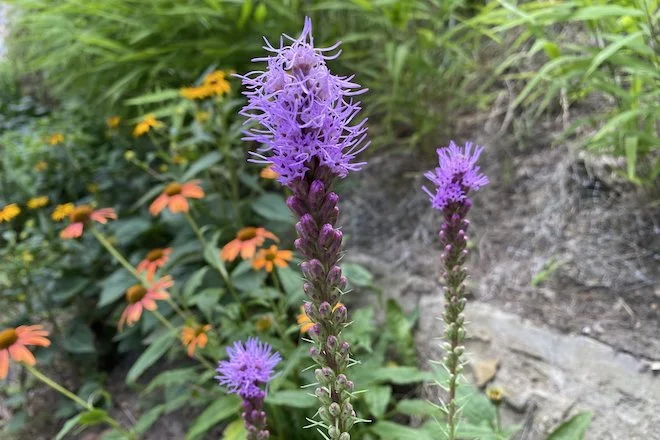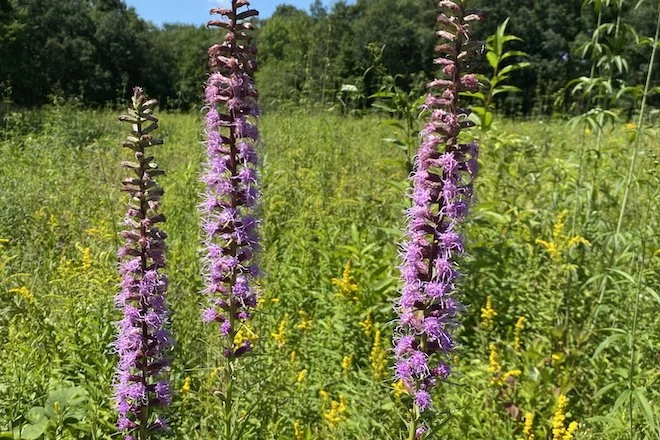This week: Blazing Star Blooms!
Hello!
Blazing Star (Liatris spicata) is easily one of my favorite plants. While Liatris are typically associated with the Midwestern and Plains prairies, Liatris spicata is native to meadows in the eastern United States and is now a very popular plant in home gardens.

It’s popular because it is not only beautiful but distinctive. Its foliage is delicate with a grass-like texture that adds visual interest and movement to the garden. It begins blooming mid-summer with tall, bottlebrush spikes of flowers that burst open from the top down. It also typically grows to around 3 feet tall, likes the sun, and tolerates moist soils, making it suitable for rain gardens. While it will reseed, it is not aggressive.
Blazing Star in the Garden

I frequently plant Blazing Star alongside Coneflowers or Black-Eyed Susans because the flower shapes (bottlebrush spire vs. daisy-headed) and foliage (threadleaf vs. “standard’ leaves) contrast and complement each other.
Blazing Star is a larval host, and it attracts beneficial insects, butterflies, birds, and hummingbirds. Helpfully, deer are seldom interested in this plant.
Blazing Star in the Prairie

You can see Blazing Star in its original habitat at Jennings Environmental Education Center in Butler County. Jennings is special because it is a relic prairie—in short, it has remained a prairie since the last ice age, an exceptionally rare occurrence in Pennsylvania, where most land gave way to forest or farmland. In addition to Blazing Star and many other native flowers, Jennings is also home to vernal pools in the spring, a sedge fen, and the endangered eastern massasauga rattlesnake. Their Blazing Star blooms at the end of July and early August, so it’s a great time to plan a visit.
Elsewhere:
Research at Penn State suggests that bees are just like us: they don’t always make the best food choices. This spells trouble for bees, as nutritional stress is a potential factor in bee decline. Read more about the study here.
Have a good week,
Julie